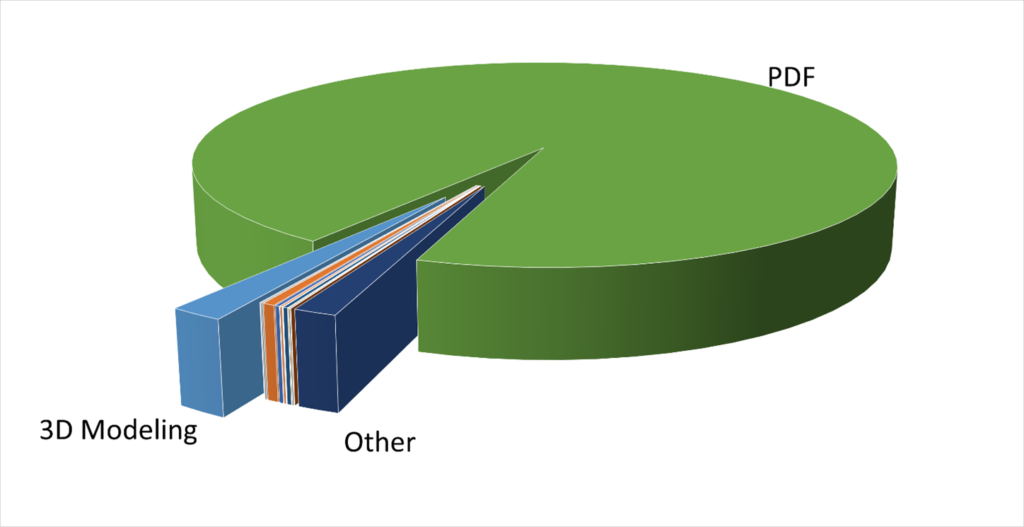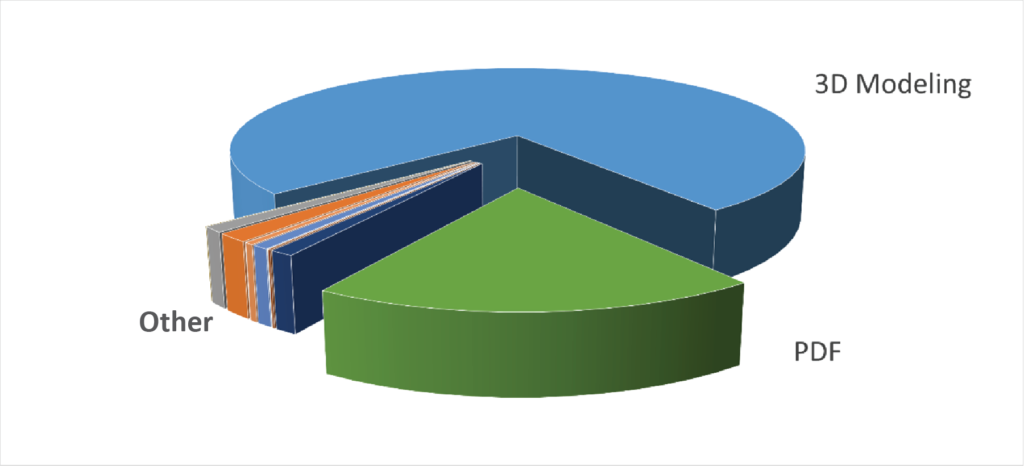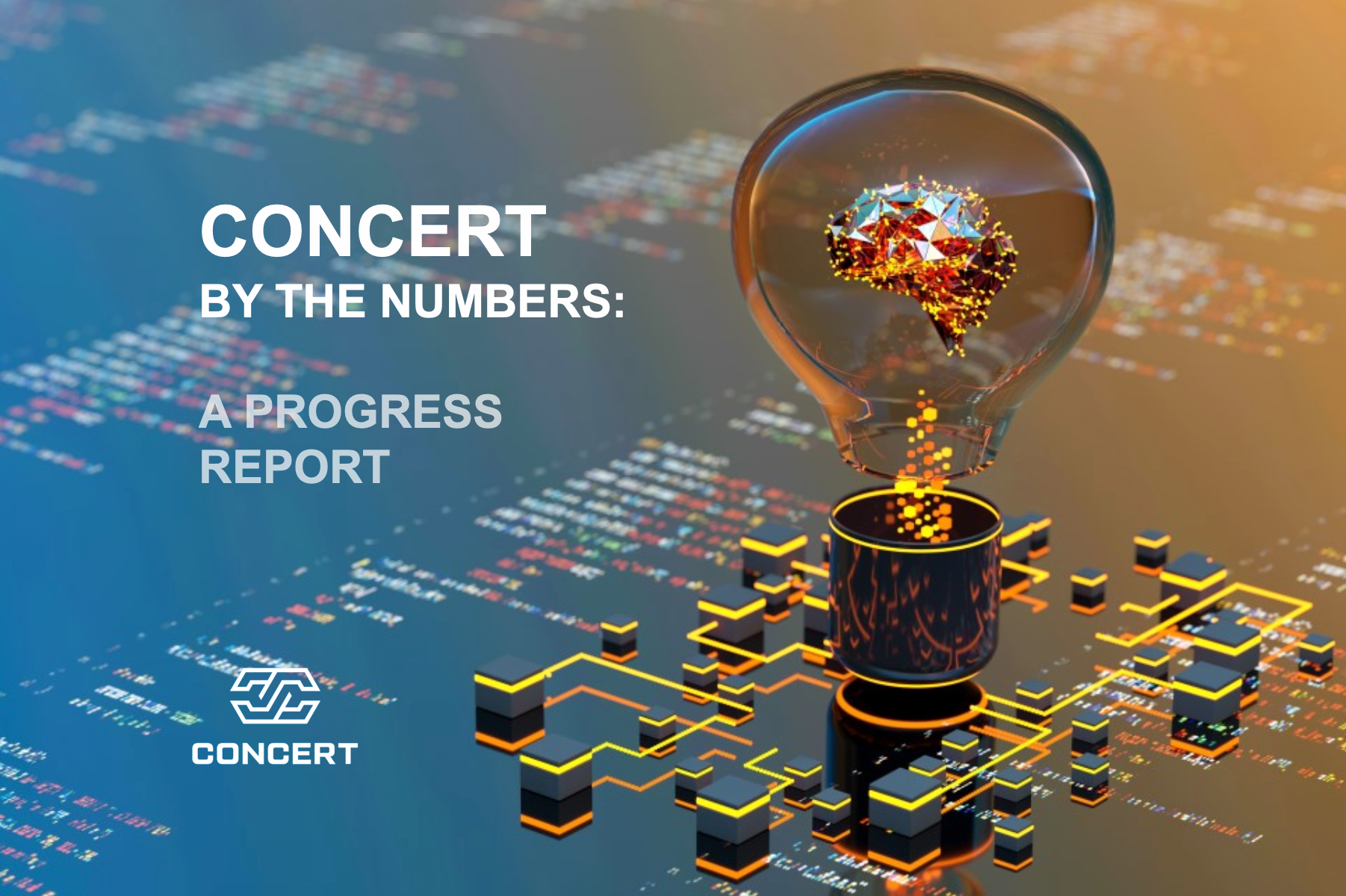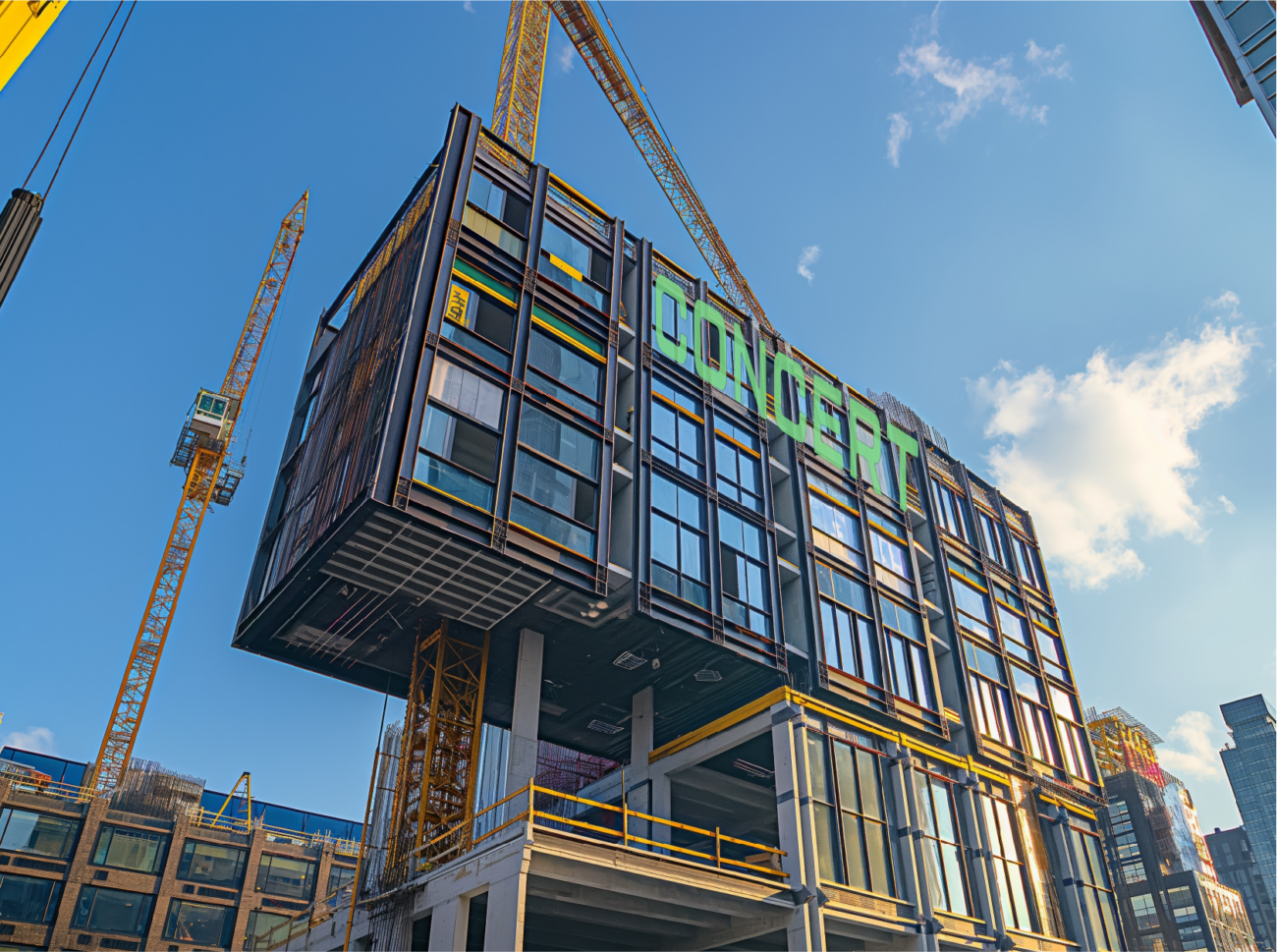by ConcertVDC
Concert strives to become the ultimate platform in data coordination for the design and construction industry. To achieve this, we are providing a great product through fostering a new “common good” culture centered around authentic data and its governance.
We are at the early stages of this journey, but our customers in Concert have already registered thousands of files across hundreds of projects. This provides enough data for us to begin gaining some insights. Our first foray has provided a few surprises.
Diversity of Data Types
Architects use Concert to share information with numerous project participants, typically to fulfill contractual commitments and project coordination. Originally, we had expected a narrow selection of file types to be used. Namely, PDFs, which represent 2D plan documents, and RVT files, which represent 3d building models.
What we actually found was a diversity of over 40 different file types, including model files from multiple titles, a variety of scripting files, immersive AR/VR experience files, and thousands of photos, spreadsheets, and, of course, PDF documents. Clearly, there’s a lot more to communicating design intent than drawings and models.

2D Plans Still Dominate
Concert’s mission is to catalyze the transition from 2D documents to authorized 3D/model-based and machine-readable instruments of service. This won’t happen overnight, however, but progress is evident. Today, ninety-five percent of all shared files are PDFs, but a small sample of the projects contain no 2D plans. It remains to be seen whether this is maintained throughout the trades where physical plans are commonly the way of transmitting building instructions.

3D Models Make Up Bulk of Storage Capacity
Models can be complex consuming hundreds, and sometimes thousands, of hours of work to create. They are valuable assets. It is not surprising to learn that shared models represent the great bulk of stored data. As models continue to drive more construction activity, we would expect to see an increase in total storage, although many of the output files might not be in saved as a single file. Today, models represent about 76% of all stored data in Concert.
As Concert continues to grow as a company, we will continue to share more data insights with our customers. Ideally, this will help our customers understand how they use their data and develop best practices around design production, data governance, and project management.
Concert is making significant strides in data coordination for design and construction. We have created a platform that is easy to use and creates new opportunities and value for the design and construction industry. Concert is poised to become a leader in the field.





